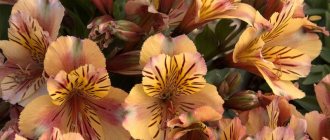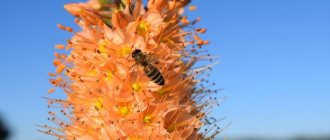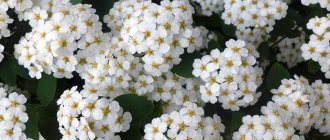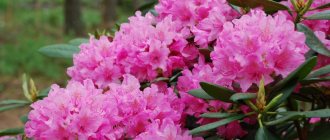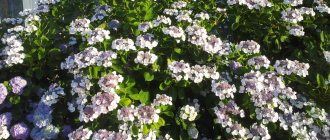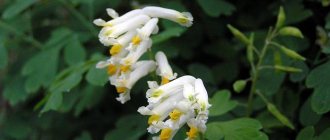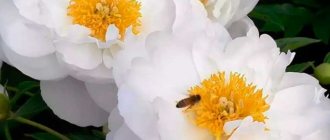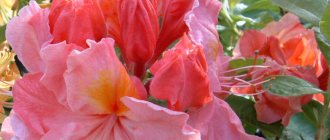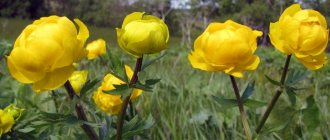Alstroemeria is a flower that is a common inhabitant of greenhouses. Many plants are grown for their beautiful and long-lasting cut. In a bouquet, it is a wonderful companion for luxurious roses or royal lilies, highlighting their lush beauty. And alstroemeria itself is so decorative that it can easily do without other flowers.
Many gardeners want to tame this curiosity and plant it in their garden. This is quite possible if you surround the flower with proper care and attention.
Description of Alstroemeria
The representative of the Alstroemeria family received such an unusual name from Carl Linnaeus. He grew it from seeds brought from Spain and described it, immortalizing in the name the name of his student, Claes Alströmer, who brought them. The flower came to Europe from South America, thanks to the conquistadors. Alstroemeria's habitat covers the entire continent. Natural growing conditions are different:
- tropical Brazilian forests;
- the world's driest Atacama Desert;
- highlands of the Andes.
This perennial herbaceous plant has a number of features that are characteristic of representatives of this family, but rarely found in other plants:
- flexible, straight stems without branching, the height of which depends on the species, are covered with leaves unevenly - closest to the peduncle;
- alternate leaves have an elongated linear shape; due to the twisting of the petioles by 180 degrees, they are turned upside down, this phenomenon is called resulination by botanists;
- alstroemeria roots are juicy, spindle-shaped, contain a lot of starch;
- flowers up to 5 cm in diameter are collected in an inflorescence - a corymb, there can be up to 25 pieces;
- stamen filaments number 6 form 2 circles, the lower ovary ends in a three-lobed stigma;
- the box containing the seeds opens completely, scattering the contents far.
The ability of a plant to distribute seeds without intermediaries is called autochory.
Flowers are why the “Peruvian lily” was introduced into culture and is grown en masse. Let us dwell on them in more detail in the description of alstroemeria. Its flower consists of two corollas, as if inserted into each other. The 3 inner petals are narrow, pointed, they are covered with dark lines, the size of which increases from the base to the edges, and the density decreases. The outer corolla, often of a different color, consists of 3 wide petals, shaped like a heart. The color is very diverse: white, pink, red, purple, yellow in various combinations. It is not uncommon to have a darker border along the edge of the petals.
Alstroemeria blooms in spring and summer, but good care will allow you to admire this beauty in September. Zygomorphic - with a single axis of symmetry, the shape of the flower is due to difficulties with its accessibility to pollinators - insects or hummingbirds.
Alstroemeria in history
Alstroemeria, or Peruvian lily, lily of the Incas, as Europeans initially called this amazing plant, became the most popular flower crop in the world in the second half of the 18th century. At first, Sweden was “conquered” by the beauty and grace of this flower, then the “tulip paradise” was Holland and England.
Alstroemeria varieties 1 - Gold, 2 - Whistler
Now it is grown even in such distant countries as Kenya and Japan. But most species of this plant are still common in its homeland, South America.
Alstroemeria varieties 1 - Revolution, 2 - Record
Alstroemeria: types and varieties
The genus of Alstroemeria is numerous, according to various sources there are from 50 to 100 species in it.
- Golden - found in Chile in wet meadows, orange flowers, yellow center;
- Brazilian - the highest of all natural species - up to 2 m, inflorescences consist of 30 orange or brown flowers;
- Campanulate - an inhabitant of tropical forests;
- Herbaceous and multi-leafed - both species grow in the Atacama Desert;
- Bloodflower - has a fleshy rhizome, the number of dull red or orange flowers is up to 15 with a stem height of up to 1 m, comes from Chile;
- Ligtu - grows in the mountains of Chile, is cold-resistant, the height of the stems is up to 90 cm, they are covered with narrow leaves, the flowers are pink with a yellow center;
- Dwarf - an unusual species from Patagonia, only 8 cm high, capable of growing on pebbles, bears only one flower;
- Snezhnaya is an inhabitant of the mountains of Peru and Bolivia, where it has mastered altitudes of up to 4000 m;
- Pretty - tuberous roots and branched stems with pink-yellow flowers, grows in Brazil.
Alstroemeria golden
Alstroemeria bloodflower
Alstroemeria Snow
These and other species became the basis for selection, thanks to which more than 20 hybrid series were developed. Representatives of the following groups are most often grown:
- Dr Salter – the inflorescences are compact, well open, a distinctive feature is stripes on the upper inner petals;
- Ligtu - a series created with the participation of the wild species of the same name, blood-flowered alstroemeria and golden hybrids in England a hundred years ago; after flowering the bushes die;
- Hybrids of Dutch origin are distinguished by wide petals and double color.
Varieties of hybrid lines:
- Virginia is one of the most common varieties with white coloring and dark stripes on the upper two inner petals;
- Alicia - light pink petals have a darker edge and cherry-colored stripes;
- Dynasty - the whole flower is soft lilac, the stripes are brown;
- Yellow crown - cheerful yellow color diluted with brown stripes;
- Climax - bright flowers with a soft yellow color and a wide red border, the stripes are barely noticeable;
- Lovely - deep red color diluted with small light stripes on the two upper inner petals, few dark stripes;
- Orissa Lil - rich lilac color and two light spots at the base of the upper petals, wide, dark stripes;
- Panorama - in the center of each pink petal there is a darker spot, a large number of stripes;
- Floriana - lilac petals end in a dark spot, the two upper inner petals have a white center, no stripes.
- Monte Servino - deep cherry color of the petals, wide stripes and two small light pink spots make the flower very expressive.
Alstroemeria Virginia
Alstroemeria Monte Servino
Alstroemeria Yellow Crown
The varietal diversity of alstroemeria is great; most often these flowers are grown in greenhouses. Planting and caring for alstroemeria in open ground has its own characteristics. In order for the plant to bloom successfully in the flowerbed, you will have to grow seedlings.
Alstroemeria in cut
Alstroemeria has gained particular popularity as a cut plant. This is a plant that can form the basis of a bouquet. Often used to complement the main colors in an arrangement.
The stability of cut alstroemeria is simply amazing: from 10 days to 2 or even 3 weeks!
Alstroemeria varieties 1 - Record, 2 - Jaffa
Alstroemeria: growing through seedlings
The seed method of propagating alstroemeria is most often used. Such plants will not bloom during the planting season, but only after two or three years.
The end of February–beginning of March is the best time for sowing.
Advice! Alstroemeria seeds that will be grown in open ground need stratification.
For this, the seed is kept in a damp cloth on the bottom shelf of the refrigerator for about a month. It is better to grow alstroemeria without picking, sowing the seeds in separate containers. The soil for it is prepared from a mixture of turf soil and leaf humus in a ratio of 1:3. To make the soil reaction acidic, add a small amount of fibrous peat, and to make it looser, add coarse sand. A stratified seed is placed in each container with drainage at the bottom and covered with a 1 cm layer of soil. Crops require greenhouse conditions - a plastic bag is placed over the container. Before germination, maintain a temperature of 18 degrees.
After 3 weeks, and sometimes even after a month, sprouts will appear.
Advice! Stratification can be carried out after sowing, keeping the containers in the refrigerator for a month.
The containers need to be ventilated daily, and the soil should be moistened if necessary. The package is removed when shoots appear.
Caring for alstroemeria at the stage of growing seedlings:
- temperature - from 20 to 25 degrees;
- full lighting for 12 hours, if necessary - additional lighting;
- moderate watering;
- 2-3 feedings, the first with a solution of mullein diluted 1:20 when the first true leaf appears, the second with a weak solution of complete mineral fertilizer (3 g of ammonium nitrate and potassium sulfate and 6 g of superphosphate per 2 liters of water) - in the phase of the third leaf, third - after 3 weeks with the same solution;
- hardening a couple of weeks before planting, they are gradually accustomed to fresh air.
If alstroemeria grew in one container, dive them into separate pots or cups when the third leaf appears.
Selecting a location and planting a Peruvian lily
The popularity of alstroemeria lies in the beauty of its flowers and tall stems, which allows it to be used for cutting into bouquets, although the flower petals tend to quickly shed. In addition, the rhizomes of some species are used in folk medicine to prepare starch, from which medicinal food is prepared. In the garden, the Inca lily is good as a tapeworm plant, in mono-groups and mixed plantings.
Despite the fact that the plant’s frost resistance is not very high, it is possible to grow it in open ground if you provide winter shelter for the root system and choose the right place. When choosing a place for this plant, you need to choose an area with maximum sunlight. It is optimal to choose the south side.
Perhaps at the height of a summer day the flower will need light shade. Preferably moderately acidic, well-fertilized fertile soil. Drained loams are best suited.
It does not tolerate both drying out of the soil and stagnation of water in it. Although some species tolerate high humidity well. You can grow a Peruvian lily either by sowing seeds or by dividing the bush. Before sowing, alstroemeria seeds need to be stratified. To do this, they are placed at the end of January in peat mixed with garden soil and kept for about 50 days at a temperature of + 6.
After this, for several days I raise the temperature to + 20. The soil is sprayed with water, the pot is covered with glass and the seedlings are waited for to appear. As the soil dries, moisten it and remove the glass for a while. Before planting in the ground, grown seedlings are hardened off at outdoor temperatures.
At the end of May, choosing cloudy weather, the seedlings are planted in a prepared bed. The holes are filled at intervals of 30 cm, a handful of rotted manure is added to the bottom, a flower is installed and the hole is covered with earth. Plantings are watered and the ground is mulched. Alstroemeria from seeds blooms only after a year. The rarest varieties and hybrids are best propagated by dividing the bush. You can divide a plant that you grow yourself or buy part of the rhizome at the store.
You can divide the bush in spring or autumn. Don’t get carried away and divide the bush into many small parts. It is optimal to get three divisions. As a rule, the Peruvian lily takes root well with proper care.
Planting alstroemeria in open ground
Alstroemeria is heat-loving, so you can’t rush to plant plants in the flower garden.
Deadlines
The timing of planting alstroemeria in open ground depends on the place where it is grown. For plants to take root well, the following conditions are needed:
- soil temperature not less than 20 degrees;
- persistent warm weather;
- end of return frosts.
In most regions, such conditions develop at the end of May, and in some places at the beginning of June.
Landing rules
For alstroemeria, choose a place where there are no drafts and cold winds with direct sunlight in the morning or after 4 o'clock in the afternoon.
Advice! Alstroemeria feels best in lace shade.
The soil selected is nutritious, loose, with a slightly acidic or neutral reaction.
Landing rules:
- the step between planting holes depends on the height of the plant - from 30 to 50 cm;
- the depth of the hole is 30 cm, and the width is from 30 to 50 cm, the roots should fit in it freely;
- drainage is arranged at the bottom;
- a layer of well-rotted compost 8 cm thick is placed on the drainage;
- transplantation is carried out by transshipment, filling the hole with fertile soil;
- the soil is compacted and watered.
At first, it is better to shade the plants by covering them with spunbond.
Alstroemeria care
Growing alstroemeria is not very difficult: regular watering and fertilizing will be required. The plant has one feature that is unique to it: when the soil overheats above 23 degrees, it responds by developing roots to the detriment of flowering.
Advice! Mulching with tree bark or peat with a layer of at least 7 cm will prevent overheating.
Watering
Alstroemeria requires systematic but moderate soil moisture. The soil should not dry out. During drought they water more often - twice a week; during rain they use natural moisture.
Feeding
Plants require nutrition regularly. Fertilizing is carried out every ten days, alternating mineral and organic fertilizers. At the stage of increasing leaf mass, emphasis is placed on nitrogen-containing nutrition. During the period of budding and flowering, alstroemeria's need for phosphorus increases. Potassium should be supplied to plants in the form of wood ash. It is embedded in the soil under the bushes 3-4 times per season.
Transfer
Alstroemeria roots grow quickly, dense bushes with many shoots bloom poorly. Every year in spring or autumn, an adult plant is replanted, combining this procedure with dividing the bush. The rules for planting divided alstroemeria are the same as when planting seedlings. Holes are dug in proportion to the root system.
Advice! In order for alstroemeria to bloom magnificently, the flower stalks are cut off without waiting for the petals to fall, and the bushes are thinned out, cutting out weak and deformed shoots.
Care during flowering and dormancy
Although alstroemeria is an unpretentious flower, it needs some care for growth and flowering.
Temperature
Viola flowers
During the dormant period and preparation for flowering, alstroemeria requires a temperature of about +15 °C at night - +13 °C.
For the development of seedlings, growing the root system and flowering, a temperature within +21..+23 °C is more suitable.
It is important that when growing in a greenhouse, the temperature does not drop below +8 ° C, otherwise the plant will freeze.
Attention! If the flower is kept in open ground all year round, it must be protected from severe frosts.
Watering
There is no need to water alstroemeria often - in case of heavy rains, additional watering is not required; in their absence, watering once a week is sufficient.
The soil should be slightly moist, but the plant does not like excess water: the roots may rot. If there is not enough moisture, alstroemeria may stop blooming and die altogether.
The soil
Sandy or clay soil is more suitable for this flower than heavy soil. Soil acidity should be between 6.5 and 7 pH. If the pH is more than 7, you can reduce the acidity by adding peat or substrates that are sold in specialized stores.
The soil around the roots should be mulched so that they do not overheat - otherwise the flowering of the plant will be damaged. The ground around the flower should be covered with a 3 cm thick layer of compost, manure, leaves or grass. Thanks to it, the weeds near the alstroemeria will grow worse, the soil will be more nutritious, and the roots will be protected.
Top dressing
For abundant flowering, you need to fertilize the bushes 3-4 times a month from spring until autumn frosts. What matters is what is included in the fertilizer: it must contain both phosphorus and nitrogen. Thanks to them, the flowers and leaves will be large and bright.
Note! From time to time you can add a little wood ash under the bushes.
Alstroemeria needs to be fed several times a month.
Preparing for winter
Different varieties of alstroemeria bloom from spring until autumn frosts. When alstroemeria flowers wither, for further cultivation they need to be carefully removed, and the bushes themselves should be thinned out so that they are not too thick and do not take a lot of strength and nutrients from the plant. Thin and weakened stems must be removed, and all healthy ones must be shortened.
In order for alstroemeria to successfully survive the winter, it is covered with spruce branches, film, and then soil and humus. This way the roots will not die from frost. Annual varieties do not need to be protected from frost in any way - they will not bloom next year in any case.
If alstroemeria are grown at home, there is no need for special preparation for cold weather: it is only important to observe the temperature and light conditions. For this you can use phytolamps.
Alstroemeria propagation
For this plant, both vegetative and seed propagation is possible.
Seeds
Alstroemeria seeds remain viable for a long time - up to 3 years. If they are collected from their own plants, then the likelihood of repeating the parental varietal characteristics is low. But this does not make the flowering bushes less decorative. In this way, new varieties can be obtained. Seed propagation is described in detail in the section on growing seedlings.
By dividing the rhizome
This method guarantees alstroemeria flowering in the year of planting or the next year with autumn division. It retains varietal characteristics 100%.
It is better to divide the rhizomes in the fall after flowering, so that the planted plants have time to take root before frost. Each division must have at least 6 dormant buds. The bush is cut into pieces with a sharp knife. The sections are powdered with colloidal sulfur or carbon powder. Immediately plant the plants in the prepared beds.
In the spring, you don’t have to dig up the bush, but carefully separate the tubers.
What does alstroemeria look like: description
Alstroemeria: cultivation and care
Alstroemeria are flowers very similar to lilies. They are distinguished by spindle-shaped roots and tall stems. Small linear leaves are located throughout the stem, but they are more concentrated at the top.
A feature of this plant is considered to be resupination - the petioles of the leaves are twisted, which is why their lower part is located on top and the upper part is located below. This makes alstroemeria even more unusual.
Astralmeria flowers can be pink, scarlet, purple or even lemon in color. They can be either monochromatic or multi-colored - for example, in the middle the flower can be yellow, and at the ends of the petals - crimson. The petals also have dark longitudinal stripes. Alstroemeria has six lanceolate petals, they are arranged in threes in two circles. The stamens are arranged in the same way and have elongated anthers.
For reference! With proper care and a favorable climate, the plant blooms twice a year: in spring and summer, and sometimes in autumn, if it is warm. The alstroemeria fruit is a capsule with small seeds that are dispersed by the wind.
There are more than a hundred varieties of alstroemeria - among them, common varieties are:
- Virginia - white alstroemeria, has large flowers that bloom from June to November. The height of the stem is about 70 cm. The plant loves the sun very much.
- Harmony - distinguished by bronze flowers with pronounced dark strokes on the stems. Stems up to 160 cm, strong. Blooms in spring and autumn until frost.
- Regina is a tall variety, the stems grow up to 2 m. Pink alstroemeria blooms in spring and autumn.
- King Cardinal - the variety is distinguished by the presence of tall peduncles in its flowers. Loves plenty of light. Alstroemeria is red, blooms from April until the onset of autumn cold weather.
- Beauty - stems up to 170 cm, powerful. Alstroemeria is purple, may have a lilac tint. Sometimes you can see blue flowers. These alstroemerias bloom in spring and autumn, in September.
Alstroemeria can be of different colors: from white to purple
Wintering
Wintering in open ground is the hardest time for a flower. The roots can tolerate only slight freezing of the soil. But alstroemeria can be helped to survive the winter. To do this, do the following:
- when the first frosts pass, all shoots are cut off, leaving only small stumps;
- pour a thick layer of fallen leaves on the bushes;
- cover with film on top;
- A mixture of humus and garden soil is spread on it in a thick layer.
Advice! All covering operations are carried out in dry weather; it is desirable that the top layer of soil is dry.
If the winters are harsh, it is better not to risk it, but to dig up the bushes and replant them in boxes, placing them in a frost-free basement.
